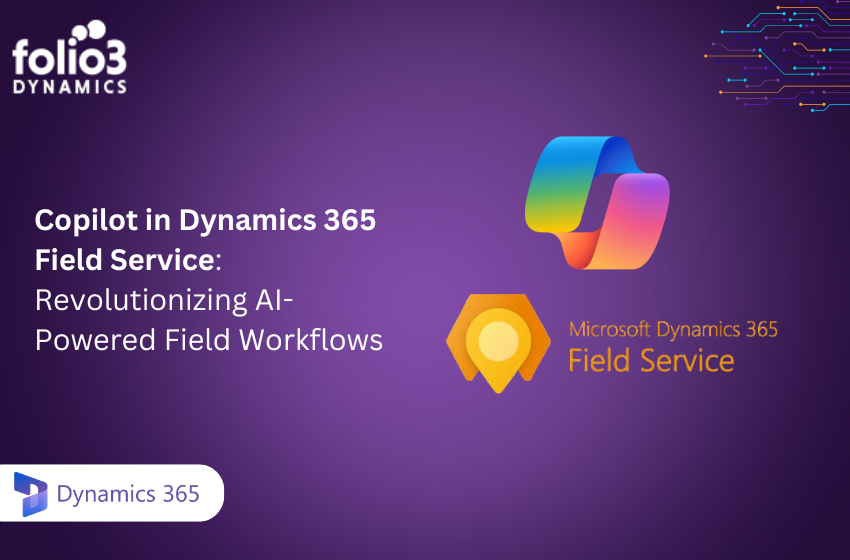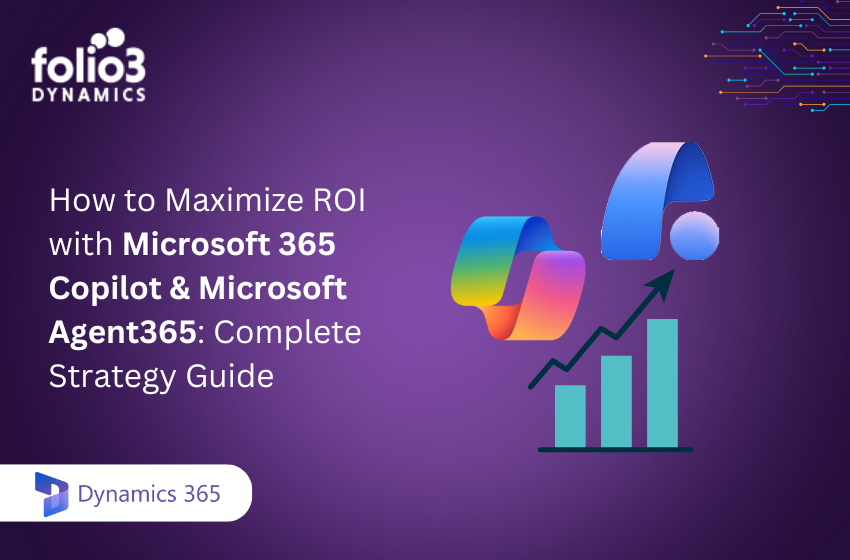In the fast-paced, interconnected landscape of modern business, the cogs of enterprise are turning at an unprecedented speed. To keep up with the ever-evolving market demands, businesses particularly small enterprises vying to make a mark, need a robust and agile solution that can unify and automate the vast array of business processes. Enter Dynamics 365 Business Central – Microsoft’s answer to the growing complexity of modern business management needs.
For a business looking to streamline operations, optimize resources and grow in an organized manner, the integration capabilities of Dynamics 365 Business Central can be the very linchpin to success. Small business owners, process optimizers, and ERP users, listen up. This blog is your comprehensive guide to harnessing Business Central’s integration process and steering your enterprise towards new levels of efficiency and power.
The Evolution of Business Management Solutions
Once upon a time, business management was a world of ledgers, paper files, and isolated spreadsheets that chronicled a company’s activities. As these businesses grew, the limitations of manual or rudimentary software-based processes became painfully clear. The advent of ERP transformed how businesses operated, but the early systems were often clunky, expensive, and difficult to adapt to changing needs.
Now, with cloud computing and advanced APIs, a new era of ERP has dawned. Dynamics 365 Business Central stands at the forefront, offering the perfect blend of power and simplicity tailored for the modern enterprise. It’s not just about tracking finances or managing day-to-day operations; Business Central offers a unified solution that integrates everything from sales and service to procurement and projects.
Now, with cloud computing and advanced API a new era of ERP has dawned. Dynamics 365 business central stands the forefront offering the perfect blend
Dynamics 365 Business Central
At its core, Dynamics 365 Business Central is a comprehensive, cloud-based business management solution that empowers small and mid-sized businesses to automate and connect their financials, sales, service, and operations. It unifies critical business functions, allowing you 360-degree visibility of your business and aids in smart decision-making with actionable data insights.
The beauty of Business Central lies in its user-friendly interface and seamless navigation, ensuring that businesses can onboard quickly and start reaping the benefits without the delays commonly associated with complex ERP implementations. With its strong focus on modularity and extensibility, Business Central can grow with your business, accommodating new processes and workflows as your business evolves.
The Significance of Integration in Today’s Business Environment
In a competitive market where data is king, siloed information systems are akin to business heresy. Integration is the salvation that ensures a consistent flow of data between disparate systems, fostering operational efficiency, and enabling strategic insights. The ability of Business Central to integrate with a myriad of applications is what makes it such a game-changer.
Data inconsistency, manual data entry errors, and the delays associated with managing multiple platforms can be crippling. Integration eradicates these pitfalls, empowering businesses to operate as a well-oiled machine. Whether it’s syncing customer data between your CRM and accounting systems or automating complex supply chain workflows, proper integration is the linchpin of seamless operations.
Key Features of Business Central Integration
Say you have a growing business and are looking to leverage Business Central’s capabilities to streamline operations. What should you look out for in terms of integration features? Here’s a detailed exploration of what Business Central brings to the table:
API Access for Data Harnessing
Business Central offers extensive API access, allowing you to connect, interact with, and manipulate your data in the system programmatically. This means you can easily pull data from Business Central into other systems or push data into Business Central to keep all your systems up to date without any manual intervention.
AL Language for Customization
For the more discerning users who want to tailor Business Central to their exact needs, the application offers rich development capabilities in the form of AL (Application Language). With AL, you can create custom extensions, fine-tune your processes, and ensure Business Central adapts perfectly to your business requirements.
Connectivity with Microsoft Ecosystem
Business Central naturally slots into the larger Microsoft 365 ecosystem, providing seamless connectivity to tools like Outlook, Word, and Excel. This integration makes for an intuitive user experience and ensures a cohesive workflow across all Microsoft applications.
Power Platform and Dynamics 365 Synergy
With Business Central, you’re not just getting an ERP system; you’re unlocking the potential of the larger Dynamics 365 and Power Platform environment. This synergy extends Business Central’s capabilities to include advanced analytics, business intelligence, and the ability to build powerful automation through Power Automate.
Business Central Integration Use Cases
It’s one thing to tout the benefits of Business Central integration; it’s another to see how it can transform real-world business processes. Here are some use cases where Business Central integration shines:
E-commerce Integration
Imagine an e-commerce platform that seamlessly feeds sales data into your central ERP system. With Business Central, you can automate the transfer of sales orders, update inventory levels in real time, and ensure that your financials are always accurate.
CRM Synergy
Your customer relationship management system is the heartbeat of customer interaction. By integrating it with Business Central, you can have a singular view of your customers, including sales history, support cases, and financial transactions, which can lead to a more personalized and effective marketing and sales approach.
Supply Chain Management
Today’s complex supply chains require sophisticated management tools. Business Central’s integration allows for real-time visibility into your supply chain, automating inventory management, and ensuring that your products are delivered with military precision.
Step-by-Step Guide to Business Central Integration
For business owners eyeing Business Central integration, taking the initial steps can seem daunting. Here’s a step-by-step guide to simplify the process and set you on the path to a well-integrated business:
Step 1: Assess Your Integration Needs
Begin by assessing which systems and processes need integration with Business Central. Is it your CRM, your e-commerce platform, or your supply chain management solution? Prioritizing integration points will help you focus your efforts.
Step 2: Understand Data Mapping
Data mapping is the process of defining which data elements in one system correspond to the elements in another system. With clear data mapping, you ensure that your integrated systems share and interpret data correctly, preventing conflicts or inaccuracies.
Step 3: Choose the Right Integration Tool
There are several integration tools and platforms available for Business Central. Some are designed for simple data syncs, while others cater to more complex integration scenarios. Choose a tool that aligns with your business needs and technical capabilities.
Step 4: Develop a Testing Plan
Before going live with your integration, thoroughly test the setup to ensure everything works as intended. Data validation, user acceptance testing, and stress testing are all critical to identify and iron out any issues.
Step 5: Go Live and Monitor
Once you’re confident in your integration setup, it’s time to go live. But the work doesn’t end there. Continuous monitoring and tweaking are necessary to maintain a reliable and efficient integration as your business and systems evolve.
Overcoming Common Challenges in Business Central Integration
Integration, particularly with an assemblage as powerful as Business Central, is not without its hurdles. Data migration, system compatibility, and maintaining data integrity are some common challenges. Here are some strategies to overcome them:
Data Migration Strategies
Develop a clear migration strategy that includes data cleansing, transforming, and loading into the new system. Legacy data can often be a source of discrepancies; a robust migration approach is critical to maintaining data quality.
System Compatibility
Ensure that the systems you’re integrating with Business Central are compatible in terms of data formats and standards. Investing in or developing adapters that can translate data between systems is often a necessary step.
Data Integrity Maintenance
Ongoing data integrity can be ensured through regular audits, user training, and implementing strict data governance policies. Clear ownership and accountability for data management are also key to maintaining integrity.
Success Stories: Real-Life Business Central Integration Examples
The best way to understand the power of Business Central integration is through real-life success stories. Here are some businesses that have harnessed the power of Business Central integration to their advantage:
Retail Chain Optimizes Inventory Management
A national retail chain integrated its POS system with Business Central to gain real-time inventory insights. The integration facilitated automated inventory updates, improving on-shelf availability and sales performance.
Construction Company Streamlines Project Management
A construction firm leveraged Business Central integration to connect its financials with project management systems. This streamlined the invoicing process, accelerated payments, and provided project managers with up-to-date financial metrics for decision-making.
How to Get Started with Business Central Integration
For businesses looking to start their Business Central integration journey, here’s how to kick things off:
Evaluate Your Business Needs
Begin by understanding your unique business requirements. What are your pain points, and how can integration help alleviate them? A thorough evaluation will guide your integration strategy.
Choose The Right Deployment Model
Business Central offers both cloud and on-premises deployment options. Consider the pros and cons of each in light of your business requirements, technical capabilities, and budget.
Partner with a Certified Microsoft Consultant
Working with a certified Microsoft partner can be invaluable. They bring expertise, experience, and best practices to the integration process, ensuring a smoother transition and faster ROI.
Conclusion
In a world where business prowess is often measured by the effectiveness of its processes, Dynamics 365 Business Central stands apart as a beacon of modernity. Its seamless integration capabilities have the power to transform small and mid-sized businesses into efficient, data-driven enterprises.
By understanding the significance of integration, exploring the features, learning from use cases, and embracing a step-by-step approach, you can unlock the full potential of Business Central and propel your business into a future marked by success and sustainability.
The time for integration is now. Reach out to certified Microsoft partners, explore the wealth of integration tools, and take your first step towards a more efficient and competitive business model. The doors to new possibilities await those ready to enter the world of Dynamics 365 Business Central integration.
Ready to elevate your business with Dynamics 365 Business Central integration? Visit the official Microsoft website or reach out to certified Microsoft partners to begin your integration journey. Don’t miss out on the chance to maximize your efficiency and grow your business. The future is integrated.


